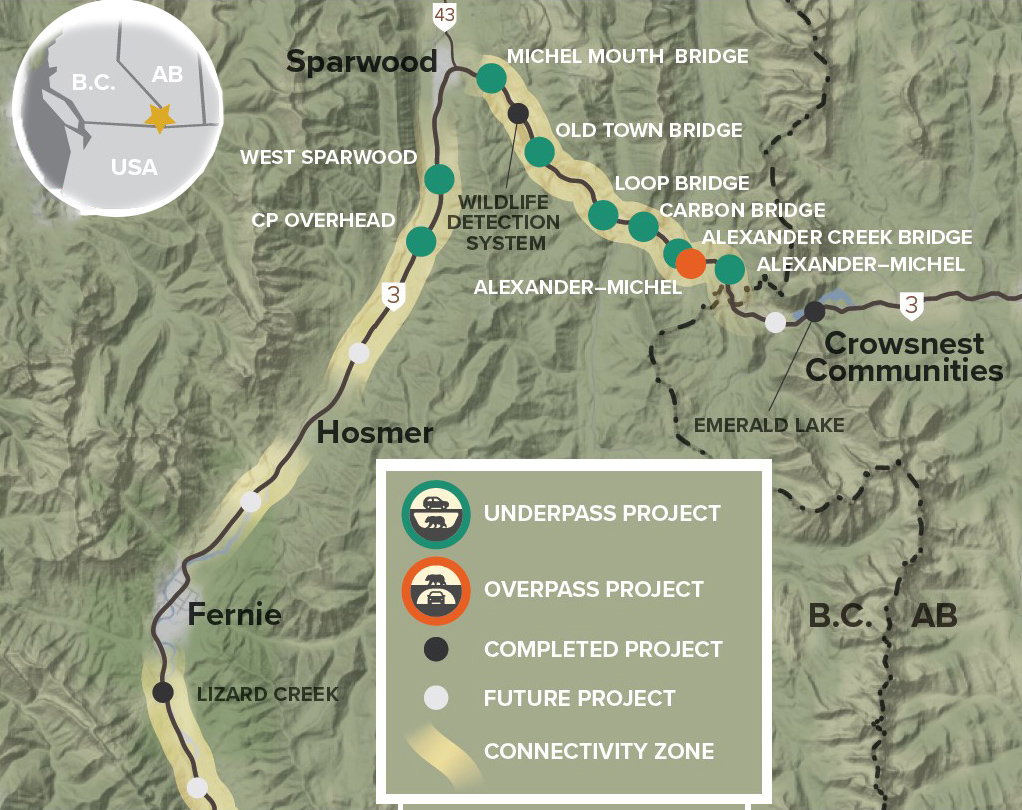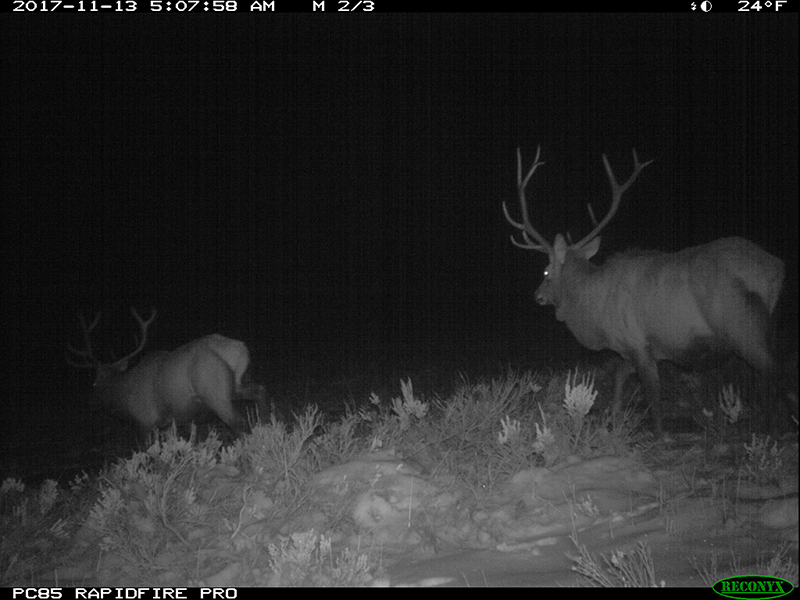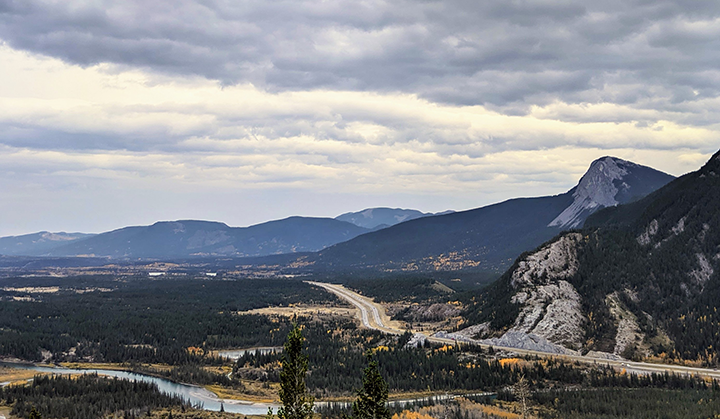Reconnecting severed habitats under and over roads
Roads are one of the biggest human-created barriers to wildlife movement. That’s why, thanks to your support, Y2Y and partners are working to normalize measures that meet wildlife’s connectivity needs at every level of decision-making for roads. Safe passages for wildlife keep people safer on our roads, too.
The Yellowstone-to-Yukon region has 116 wildlife crossing structures (more than anywhere else in the world!) Because of your generous donations during this year’s September Match, we’ll have even more in the future. We are excited to advance shovel-ready transportation projects in 2021, including those featured below. Thank you for the boost!
Project 1: Reconnection for wildlife in the Rockies
While Highway 3 in British Columbia’s Elk Valley leads to beautiful places, it cuts through a critical wildlife corridor for grizzly bears and other animals trying to navigate the Rocky Mountain corridors locally and continentally. At almost 200 collisions with large mammals on Highway 3 annually, it’s a source of mortality and fragmentation.
Over five years, the ‘Reconnecting the Rockies’ project with Y2Y, Wildsight, Miistakis, researchers, government and industry aims to make this stretch of highway safer for wildlife and people through a system of nine safe passages — including B.C.’s largest wildlife overpass — all connected with fencing.

Project 2: Indigenous filmmakers tell the story of wildlife crossings
The Alberta Government’s funding commitment for wildlife infrastructure on Highway 3 in Crowsnest Pass and Highway 1 outside of Banff National Park is a great step forward in Y2Y’s work to reduce wildlife-vehicle collisions and improve connectivity.
Now, a new short film by the youth-led Nakoda AV Club helps make the case for more wildlife crossings like the one proposed at Bow Valley Gap, a high-collision spot on Highway 1 near Stoney Nakoda First Nation.
“Roads aren’t natural to (animals), and it’s only right we do our part to protect animals from the harm we cause,” says Amber Twoyoungmen, film writer and voice actor.
Project 3: New crossings in Idaho
With your help Y2Y supported the advancement of two wildlife crossings in Idaho: the nearly completed design of an underpass and fencing on US-95 near McArthur Lake, and Idaho’s first-ever wildlife overpass on State Highway 21, north of Boise. Thousands of mule deer and elk cross this highway each fall to reach winter range. These projects’ construction will be underway by 2022.

Want more?
Our new video series, Room to Roam, highlights transportation projects that have successfully helped Idaho’s wildlife and motorists stay safe and keep moving. Hit play below and play through all four short videos!


